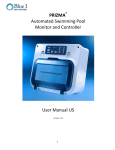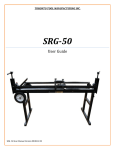Download Installation and Maintenance Manual Combi Hybrid
Transcript
Air Source Heat Pump Installation and Maintenance Manual Combi Hybrid Model Numbers: RC090MHXEA RC160MHXEA www.samsungehs.co.uk ©G Hendra September 2014 1 Hybrid or Bi-Valent heat pumps A hybrid or Bi-valent heating system uses a heat pump and the existing boiler together. They are set up to NEVER run at the same time. This type of system is popular as it means there is no work required to modify the existing heating system, all radiators are kept the same as is pipework controls etc. Like a hybrid car when the going is easy the electric system operates and when the going is hard the oily bit does the work. In the case of the heating system when the outdoor temperature is warmer (typically above +3C) the heat pump will heat the hous e and when the temperature is cold the boiler will take over. We normally recommend the old boiler continues to supply hot water and the heat pump helps out with just the heating, this is especially true if you arre using a combi boiler. www.samsungehs.co.uk ©G Hendra September 2014 2 The outdoor unit (boiler) Deciding on Where to Install the Outdoor Unit The outdoor unit must not be placed on its side or upside down, as the compressor lubrication oil will run into the cooling circuit and seriously damage the unit. Choose a location where the noise of the Air to Water Heat Pump when running and the discharged air do not disturb any neighbours. Install the outdoor unit on a flat, stable surface with plenty of drainage, gravel or grass is ideal; make sure the base can support its weight Position the outdoor unit so that the air flows into an open area. Place the outdoor unit where there are no plants and animals When installing the outdoor unit near sea make sure it is not directly exposed to sea breeze. The golden rule is, if you can see the sea from the position of the outdoor unit you need to apply Blygold or equivalent anti-corrosion coating on the whole unit. The unit needs to be securely mounted at least 100mm off the ground on rubber feet or wall brackets, the unit must be bolted down for security using 10mm bolts and Zebedee bolts. The unit must have adequate drainage away from the unit; it can produce up to 6 L / hour. There is a drainage kit included which we recommend you don’t use, its best to let the unit drain into the ground. The drain holes in the unit are clearly shown, if a drip tray is used it must be 25mm longer and wider than the base of the unit to catch all the drips. Dimensions: Size 16 - 1420mm (h) 940mm (w) 330mm (d) 103kg Size 9 - 998mm (h) 940mm (w) 330mm (d) 75kg The space around the unit is very important, allow: 150mm to the left hand side (facing the front of the unit), 600mm to the right of the unit, 300mm to the rear of the unit and 1500mm to the front of the unit. The unit will not benefit from being mounted on the North or South of the building any aspect is fine, you should avoid very exposed positions to avoid wind blowing into the back or front of the unit and very sheltered positions. An exposed location may increase difficulty for full unit defrost. The Control Box When the heat pump is delivered it comes with a control box which also contains the flow switch. Install the control unit indoors as it’s not waterproof. It needs to be sited within 15m of the hot water cylinder, 100m of the outdoor unit and as near as possible to the pump, flow switch and any zone valves. The box is 323mm wide, 339mm high, 131mm deep www.samsungehs.co.uk ©G Hendra September 2014 3 The heat pump unit has 1 inch BSP male connections; these should be connected to flexi hoses (supplied). To maintain flow rate we recommend 28mm pipework is used with this machine. NEVER use 22mm plastic tube, if you insist on using plastic use 28mm throughout All Pipework including the flexis need to be insulated with 23mm lagging It is essential to connect an expansion vessel, pressure gauge, pressure relief valve, filling loop, magnetic filter/strainer and automatic bypass. A pump will be required, normally in the flow. Dependant on system resistance some times, 2 pumps may be required. A flow meter / setter and flow switch should be installed and a strainer in the return. www.samsungehs.co.uk ©G Hendra September 2014 4 Other components you need to supply and fit: An expansion vessel, pressure gauge, pressure relief valve and filling loop Most heating engineers use a robokit with the appropriate size expansion vessel; this is sized exactly the same way as when using a boiler. Pump Your pump needs to supply 20l/min for the 9kW and 30l/min for the 16kW unit. The static resistance through the unit is 10kPa for the 9kW and 15kPa for the 16kW unit. The flow meter has a resistance of around 5kPa. The total resistance of the components will be approximately 39kPa for the size 9 unit and if the cylinder is piped using both coils and approximately 44kPa for the size 16 unit if using both coils. Flow switch and flow meter The unit requires 16L / min flow at all times, if you don’t achieve this E911 error will occur to check this flow switch is installed. The flow switch comes with the control box. The flow Switch MUST be installed either horizontally or vertically with at least 150mm of straight pipe either side, connection is 1” female BSP. The wire is 2m long and needs to connect into the wiring station. This wire can be extended to suit. We recommend a flow meter is installed into the flow side of the flow switch as per the photo. Adaptors may be required to enable this join. The flow switch is not IP65 rated (weatherproof) and so must not be installed externally. Diverter valves You will need to put a 2 port valve on both the heat pump and the boiler to shut them off when they are not operating, you need to supply these. The valve on the heat pump can be a single check non return valve. Bypass Valve You must install a bypass valve in the heating circuit as far away from the heat pump as possible. The bypass valve enables flow to be maintained as the tevs shut down at all times to prevent unit flow fault. Buffer vessels We don’t normally use buffer vessels on Samsung EHS systems; as long as the water volume circulating is over 20 Litre. The inbuilt variable speed compressor means the unit can operate without a buffer. 1m of 22mm pipe holds 380 ml of water, if you add the volume in the unit and components and make sure you put the bypass valve more than 25m from the heat pump your system volume will be adequate. When utilizing multiple units, a buffer or low loss header is required to hydraulically join the units. Magnetic Filter A magnetic filter with strainer must be installed in the return to the unit. A magnetic filter ensures that debris/foreign materials do not cause restrictions within the pipework / system. Glycol A propylene glycol mixture must be utilized to prevent freezing of the water within the system. It is important that the glycol concentration is adequate to protect the unit in case of power failure in very cold conditions. If the unit freezes up there will be no warranty. Manufacturer dependant, a mix of around 25% should suffice. www.samsungehs.co.uk ©G Hendra September 2014 5 www.samsungehs.co.uk ©G Hendra September 2014 6 Wiring and Power Supply Information Changing the wiring to your combi boiler Existing Combi wiring will be like this Remove the stat from the combi and wire it to the grey wire on 2 port valve 2 Your boiler may have different terminal numbers than the ones shown above. Connect T2 or run terminal to the grey wire of the 2 port valve see next page MAKE SURE YOUR COMBI RUNS ON 240V signals first. If not a relay is required Power The EHS system needs 2 power supplies: One connects into the outdoor unit, 20 Amp for the 9kW and 32 Amp for the size 16 The one for the control box is 3 Amp and wires into the top of the breaker (mcb) in the box Communication cable This must be run from the outdoor unit to the control box. Use 2 core flex 0.5-1mm (its 16V ac) Sensors Sensors cannot not be cut or extended. Keep sensors away from mains cables please The blue cylinder sensor is not required it is normally used in the cylinder The red safety sensor is to avoid over temperature, clip it to the outlet of the combi boiler. It plugs into a red socket T3 on the controller PCB There is a black wire with a red plug in the box, this is not used. Diverter Valves 2 port valve no 1 for the heat pump wire B6 live and B5 Neutral 2 port valve no 2 for combi wire to B4 live and B5 Neutral wire the orange B24 and grey to the run signal in the combi Thermostats/ timers and under floor heating manifolds we recommend in all cases the heating should be controlled by an external field supplied room stat / setback stat time clock etc. or run signal from a boiler enable signal from under floor manifolds. If both rads and u floor are used in the same system the heat pump can be controlled to run at 2 different set points one for each thermostat terminal. To run the unit with a stat make a connection from B20 – B24. B20 is permanently live 240V ac. B19 is Neutral When the stat is made the unit will run, when the stat opens the unit will stop. NOTE the pump will run on for 6 minutes after the unit is told to stop. Pump The circulation pump must be wired Live to B6 and neutral to B5, MAX pump power is 500 Watts. If two pumps are used wire them both to these terminals www.samsungehs.co.uk ©G Hendra September 2014 7 Checklist Checklist Outdoor unit: Is there 300mm to the left of the outdoor unit? Is there 600mm to the right of the outdoor unit? Is there 300mm to the rear of the outdoor unit? Is there 1500mm at the front of the outdoor unit? Is the unit more than 100mm above the ground? Have you allowed for the unit drainage? Is there a power supply to the outdoor unit? Indoor control box Have you stuck the yellow sticker (attached) to the front of the unit? Is there a separate supply for the indoor control box Have you wired in a room thermostat? OR a run signal from ufloor manifold Is the Samsung remote controller well out of reach of the end user? The plumbing: Is plastic pipe being used? If so is it all bigger than 22mm? Is a flow meter installed directly into the flow switch? Is the flow switch horizontal? Is there 150mm of straight pipe either side of the flow switch? If the pump is a variable speed type is it set to meet max speed within 10 seconds? Is there a filter before the return to the heat pump? Have you installed a bypass valve or allowed for bypass? Have you got your glycol ready to put in the unit? Have you lagged all external pipework? www.samsungehs.co.uk ©G Hendra September 2014 8 Filling and flushing: The Building Regulations for England and Wales, Part L, 2006, now require a central heating system to be cleaned and inhibited chemically whenever the boiler is changed or any major works are carried out to the system. When installing any Heat pump we insist on a thorough system flush prior to connection of the new equipment, your warranty will be at risk if a suitable flush is not carried out and the system becomes blocked during normal operation. The recommended procedure is to power flush the system in both forward and reverse directions at 110% of the normal flow rate and to use a chemical flushing agent where required. Filling Using the power flusher fill the system with water and 25% Propylene Glycol to more than 1 bar. DON’T fill the unit with a hose expecting no air locks, the heat pump is prone to air locking at the outdoor unit, there is no auto air vent here. Don’t pour neat glycol into the unit; there is no chance of the heating pump moving neat glycol around the system. With the power OFF, remove the front of the remote controller, slide it upwards, turn it over DON’T TOUCH THE PCB, there are 8 dip switches near the red sensor, using a small screwdriver flick dip switch 1 and 5 to on. Cooling will no longer be available. Put the controller back on the wall. On the outdoor unit remove the front cover, there are 2 screws at the top and one at the bottom, slide the cover down. Inside the unit on the back of the white switch box there is a baseplate heater PCB see picture. Which is not normally required in the UK, disconnect the bottom wire with the white plug and tuck it out the way Powering Up Apply power to indoor control box first then the outdoor unit. In the middle of the control box PCB you will see two tiny leds one red and one orange flashing. The red one shows the signal leaving the PCB and the orange shows the signal coming back from the outdoor unit. If this doesn’t happen check there is power on at the outdoor unit. Check the comms cable between the outdoor unit and the control box F1 and F2. Put the cover back on the outdoor unit. www.samsungehs.co.uk ©G Hendra September 2014 9 Setting the Clock Press the grey set button for 5 seconds. The day will flash, adjust this with the silver up and down buttons, press grey set. The hours will flash adjust this with the silver up and down buttons, press grey set. The minutes will flash, adjust this with the silver up and down buttons, press grey set you are back to the normal screen. www.samsungehs.co.uk ©G Hendra September 2014 10 Electrically testing the unit: It is possible to test each component one after another using a service function. You can use this to make sure you have wired everything correctly. To access service mode press blue set button and test button together for 6 seconds. The controller will display TEST. Immediately press the top left button to turn the pump on and leave it running while in test mode to avoid a fault. Press the top left button the unit will run the pump. The grey set button will start the backup boiler Using the blue view button you can see 5 temperature sensors, inlet and outlet to the heat exchanger, the red sensor (where used), water cylinder and sensor in the remote controller. To test the external run signal or stat is connected adjust temperature on stat up. If stat is wired to B22 Heat1 will replace test on screen. If stat is wired to B24 Heat 2 will be displayed. If both stats 1 and 2 are operating heat 1 and 2 will flash one after the other. Watch out for this, wireless stats can cause problems where they send a signal which the unit sees on both terminals, it sees this through the neutral, if this happens you will need a relay. To exit service mode press and hold cancel delete for 6 seconds www.samsungehs.co.uk ©G Hendra September 2014 11 Test 1 To Avoid further problems we recommend you set the units up in test mode before starting the heat pump. Firstly in test mode run the pump, press blue set button and test button together for 6 seconds. The controller will display TEST. Immediately press the top left button to turn the pump on and leave it running while in test mode. When the pump is running a little house with a circle around it in the status window of the controller. The unit wants to see at least 16 l / min flow to activate the flow switch, if there is not enough flow the unit will never operate. You should have a flow meter installed, if you haven’t now is the time to buy one. If you look into the flow meter you can see the flow in litres per minute. In this picture you can see a flow rate indicated, this shows 25l/min NOT 35l/min If the flow rate is too low you need to fix this before moving on. Check: All valves are open. Including TRVs, underfloor heads etc., the heating 2 port zone valves should also be open by default during this test. The pump speed is set at highest, not fluctuating but at high constant speed. If you have a small pump 15/50 or 15/60 this will almost certainly not be big enough. There is no air in the system, hold the top of the flow switch, you can actually feel the paddle moving back and forward and hear it rattling if there is air. If you manually open the hot water 2 way valve check the flow rate again, if you can only reach 16l with the heating and hot water open together it’s a sure sign the pump you have installed is too small. Once the flow rate is high enough move onto test 2 below (while still in test mode) Test 2 Set up the bypass valve with radiators In heating mode check the unit is pushing water into the radiator heating circuit only. Press the std eco power button this closes valve 2. This valve is for zone 2 wired to B15 and B18. Open the bypass valve fully, if you are not sure set it to its lowest setting. Now close every radiator on the system except one. Using the flow meter check the flow rate is above 16/l to avoid faults. Adjust the bypass valve to achieve this. The bypass is set now open the rads again. Set up the bypass valve with U floor heating In heating mode check the unit is pushing water into the under floor heating circuit only press the top right button this closes the valve is for zone 1 wired to B11 and B14. . Open the bypass valve fully, if you are not sure set it to its lowest setting. Using the flow meter check the flow rate is above 16/l to avoid faults. Adjust the bypass valve to achieve this. The bypass is set now turn up the wall stats again. To exit service mode press and hold cancel delete for 6 seconds www.samsungehs.co.uk ©G Hendra September 2014 12 Caution in Cold weather If the water in the system is below 10C the heat pump WILL NOT START. Press the blue view button you can see 4 sensor readings, press it until the pump symbol shows (a circle round a house). This is the water temperature, if it’s below 10C the unit will not start but the pump will run. You must warm up the water to get the unit to run, the easiest way to do this is to run the backup boiler using the test run page 11 to preheat the heating circuit. Once it’s warm come out of test run and check the heat pump works ok. Further cold weather cautions If everything is cold less than 5C (the remote controller, the water, the tank etc.) the unit will not operate correctly, it can’t understand how the house has got so cold. You will find the on off button for heating won’t work and if you try to use HW mode it will switch itself off. You need to allow the unit to warm up first. Make sure the remote controller is in a heated room. Starting it up in heating mode: If you have two port valves you should find the heating valves are open and the hot water valve closed. If you have a 3 port valve it should be open to heating mode. Start the unit my Pressing heating on off button (top left inside the door) to start the unit, set the mode to heating (sun symbol) Set the desired water temperature i.e. 50C using the up and down buttons. Once the unit starts, the pump will start immediately the compressor will start after 3 minutes, you will see the symbol for the compressor in the status screen. The pipework will begin to heat up, check the flow temperature by pressing blue view button once, the temp of the flow is shown next to a symbol of a house in a circle. Over time this will warm up, now check all the radiators or U floor loops are hot as well. NOTE: On the latest software if there is a problem with flow no error shows for 10 minutes, it’s waiting for the air to come out the system. If the compressor (outdoor unit) fails to start this could be due to flow problems. See next page www.samsungehs.co.uk ©G Hendra September 2014 13 E911 and compressor not running READ THIS When the pump is running a little house with a circle around it in the status window of the controller. The unit wants to see 16 l / min flow to activate the flow switch, if there is not enough flow the compressor will fail to start, after a few minutes an E911 fault will show every 15 seconds Check: The flow rate on the flow meter it MUST be over 18l/min The flow switch is connected to the PCB of the control box The flow switch is round the right way you can turn the head, there is an arrow All valves are open. The pump speed is set at highest There is no air in the system There is water in the system If none of this works you need a bigger pump or its air locked If you think the flow switch is faulty, (it very rarely is) remove the paddle from the water by undoing the red nut, you will need to block up the hole temporarily. Now run the pump system again using the top left button, pressing it twice clears any faults. After 3 mins of pump operation and holding the flow switch the outdoor unit will start, don’t rush the system it takes time If the flow switch is ok After 3 minutes the compressor / outdoor unit will start so the problem is flow and possibly air / cavitation see below: Rattling flow switch / Cavitation E911 fault could be caused by a rattling flow switch. This can usually be heard but can also be felt by holding the flow switch. To correct it use a screwdriver on the top of the flow switch and turn the screw from 12 o’clock to 1 o’clock. Alternatively you could also adjust the flow meter, use a pair of plyers on the top of the flow meter and turn the ball-o-fix valve from 12 o’clock to 1 o’clock; this deflects the water flow & should further reduce the rattle. Flow meter in standard positioning: Flow meter in 1 o’clock positioning: www.samsungehs.co.uk ©G Hendra September 2014 14 Field Settings Field settings are what define how the unit is configured and how it will work, each system can have very different field settings. Many field settings will need to be made: NOTE the set button is the grey one not the blue Field settings are in groups the 20s are for weather compensation and temperature control in heating, the 30s are for the cylinder and the 40s are for backup boilers and hybrid systems. Below are the field setting specific to your system as described in this book. Enter field settings by pressing test for 6 seconds, 10 will show on the screen Scroll up to 20 using the silver up button, press set, 2011 will show. To adjust this setting press set again the setting will appear at the top of the screen, adjust it with the silver up down buttons and press set again, scroll up to the next field setting using the up and down buttons and repeat. When you have finished all your 20 settings press cancel delete once, 20 will show on the screen, press the silver up button to move to the 30s and repeat the procedure above. When finished or if you get lost press cancel delete 2 x to return to the normal screen When finished or if you get lost press cancel delete 2 x to return to the normal screen Note: if you set a field setting and go back to check it, it will not have changed, the field setting do not get written to the PCB until you finish setting and exit. Field settings combi and heating only hybrids • 1061 30scs backlight on duration • • • • • • • • 2011 same setting as 4033 low ambient setting for optimisation 2012 15 high ambient temp for optimisation 2031 50C for rads 45C for Ufloor. Hi water temp for optimisation 2032 37C lowest water temp for optimisation 2092 1 tells unit to use an external stat or u floor run signal 4031 1 tells unit a backup boiler is present 4032 1 tells unit to use backup boiler 4033 3C changeover temperature from HP to boiler, system specific A full list of field settings are in the installation and user manual which come with the outdoor unit www.samsungehs.co.uk ©G Hendra September 2014 15 Operating the System in heating mode using an external thermostat and / or a boiler run signal from an under floor manifold. You have now set the unit up to run from an external signal Using a field supplied room thermostat or signal from an under floor heating system through B20-B22 and/or B20-B24; the controller no longer drives the unit. When the contact is made the unit will start and the water temperature will be controlled by the heat pump, you will not have any control over it. The water temperature is determined by the outdoor temperature; the colder it is outside the warmer the water. The unit is running in weather comp mode, You will see 0.0C on the screen; the unit is using weather compensation function to work out the water temperature. If you need to boost the heating water temp this can be done by pressing the silver up and down buttons. This boosts the radiators by up to +5 C but warning this will cost more money to run. When an external stat or run signal is used most of the functions of the Samsung remote are disabled. A waging finger shows at the bottom to show this. All these buttons are disabled and the functions they control are also disabled Note: when the heating command is sent to the unit it will not start for 3 minutes. And when the thermostat or signal is removed the pump will run on for up to 6 minutes. On latest software the end user can override the stat switching the unit off with the top left button. Avoid this as the unit will no longer run. If the sun signal is not on the display the heating is not going to operate. www.samsungehs.co.uk ©G Hendra September 2014 16 Testing the backup boiler operation. Using the field settings you have set the heat pump to heat the house when it is warmer than 3 C outside, below 3c the boiler takes over the heating. You need to test this works Start the unit operating in heating mode using the heat pump On the back of the heat pump outdoor unit is a black temperature sensor, it looks like a tube; you need to put this in a glass of ice and water to convince the unit that the outdoor temperature has fallen. Once it registers the temperature falling below 3C the heat pump will stop. A symbol of a milk churn with a B in it will appear in the right hand side of the status window on the Samsung remote controller. A run signal should now be being sent to the combi boiler which should fire up, it should start its pump and the 2 port valve for the combi should be open. There may be a period of up to 6 minutes where the heat pump is also operating, please wait and the heat pump will switch itself off. Once this all works you need to warm up the temperature sensor on the back of the heat pump to convince the unit to restart. NOTE the heat pump wont restart at 3 C it restarts 3 degrees higher than the set temperature so in this case at 6 C. www.samsungehs.co.uk ©G Hendra September 2014 17 Warranty Registration Card Warranty MUST be registered within 30 days of delivery to site. You must send proof of delivery with the warranty card. Warranty will start from the date the unit is delivered. All registrations made more than 30 days after this period will be rejected. If commissioning data is not available at this time register the unit and send the data at a later date, the warranty certificate will be returned to you when the whole form is completed. This warranty covers only the Samsung components of the installation, it is parts with a preset labour allowance only. The warranty is between Freedom Heat pumps and the installation company only, this is NOT an end user warranty. It is the role of the installer to offer a warranty to the end user covering all of the heating system including the heat pump. The standard warranty is valid for 12 months from date of delivery as entered on this card. If the unit is installed by a Samsung approved installer and this card is sent back within 30 days of delivery date the warranty is automatically extended to 36 months. Approved installers also have access to warranty extensions at the time of registration for warranty; a 4 year extension to the warranty can be purchased from your distributor or directly from Freedom Heat Pumps. Call 02380274833 for details and pricing The warranty card can also be used as a maintenance card. www.samsungehs.co.uk ©G Hendra September 2014 18 Please return a photo or scan of this form and the delivery note to [email protected] Once received we will confirm receipt and start of the warranty period. I accept the terms of the Samsung warranty and confirm the system has been registered within 30 days of delivery. I also include a copy of the delivery note. Signed Name www.samsungehs.co.uk ©G Hendra September 2014 19 Maintenance Monobloc Systems The Samsung heat pump should be maintained at least once a year to comply with warranty and RHI. The warranty card also doubles up as a maintenance sheet. Maintenance procedure Stop the unit, clean the strainer or magnetic filter in accordance with manufacturer’s recommendations and replace it. Test the concentration of the Anti-freeze (glycol) in the system using a Glycol tester the level should be 25%. If you don’t have a glycol tester a glycol tester / refractometer can be bought from your heat pump supplier or online. Refill the unit, pressure should be 1 -2 bar, We need to test the operation of the unit against the hot water cylinder. So first we need to draw off 50 liters of water, run a couple of taps for 5 mins to achieve this. The unit should start up automatically in hot water mode, if it doesn’t press the top right button on the controller, in 3-4 mins it will start heating the cylinder, a coke can symbol will show in the status section of the remote controller. The heat pump should be able to achieve 48C cylinder temperature without using the immersion heater. While running, check the outdoor unit for damage & debris, the coil needs washing, we recommend you use an approved EHS heat pump cleaning chemical, your distributor will stock this. Instructions are given on the bottle. You also need to clean and polish the outside casing we recommend car wax to do this. Hot water Cylinder: Check electrical connections & sensor are fixed properly and the overheat thermostat is set to 70C. Overheat Thermostat Adjustment Press the silver immersion button on the Samsung remote controller; this will force the immersion heater on. Check immersion heater works properly, Measure the current drawn by the heater; it should be 12-13 Amps. Measure the temperature of the flow using the remote controller. Measure the flow rate from the flow meter. With the unit running flat out measure the temperature of the air as it enters the coil and the temperature of the air in the garden. They should be the same check cold air is not recirculating. www.samsungehs.co.uk ©G Hendra September 2014 20 Leave this page with the Homeowner Your Samsung heat pump heats the house and hot water cylinder much like a normal fossil fuel boiler however there are a couple of differences which you should notice. 1 The radiator temperatures are lower than normal and will alter as the outdoor temperature changes. The colder it is outside the warmer the rads and vice versa. This function is automatic and is designed to save you money. At their hottest they will reach 50C. If you would like a constant radiator temperature this can be set by an engineer but it will increase your run costs by up to 25%. 2 The system is designed to run continuously in cold weather, turning the system on and off will make the house uncomfortable and will increase your run costs. The most efficient way to run this heating system is to leave it running at the set temperature 24 hours a day in winter time. If you turn off the heating and let the house get cold (less than 17C) it will take a very long time to warm back up to a sensible temperature. Your systems have been set up to be simple to operate. The Samsung controller looks like this, you should not use this or press the buttons on it, it is for commissioning and making settings to the system only. You should see 0.0C on the screen this means the unit is under external control from a room thermostat. If the system goes into fault, the screen will show a number at the bottom starting with E, for example E911 – A00 The engineer will want to know this number when you call him. Heating Control of the heating is by your wall mounted thermostat, not the Samsung controller; you need to read the instructions for this thermostat as its field supplied. The boiler will run when told to by the thermostat. DON’T set the room temperature too low, the heat pump takes time to recover the house temperature, as a rule don’t set the temperature more than 2 degrees below your normal set temperature when you go out of the house or it will take a long time to recover. To switch off the heating in summer set the temperature down to 16C to avoid the heating starting up. To control the temperature in your rooms please use the radiator valves. Backup Boiler The heat pump to heat the house when it is warmer than 3 C outside, below 3c the boiler takes over the heating. You will notice the radiators will be much hotter in boiler mode. NOTE as the temperature is rising the heat pump wont restart at 3 C it restarts 3 degrees higher than the set temperature so in this case at 6 C. Hot water Your system will keep the hot water cylinder hot at all times automatically, as you use the water the heat pump will constantly top up the cylinder. A cold cylinder should be reheated within an hour. An anti-legionella operation will be completed at a predetermined time every Tuesday morning. The hot water will be hotter on a Tuesday morning than the rest of the week. www.samsungehs.co.uk ©G Hendra September 2014 21























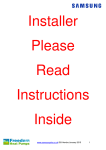
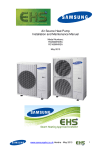
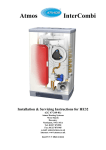

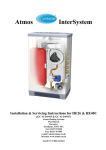
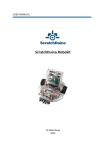


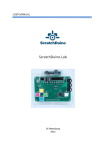
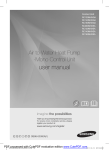

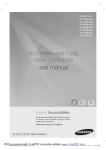

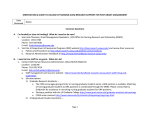

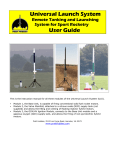
![4403002491_712_716 menu_EN_A [s]](http://vs1.manualzilla.com/store/data/005650300_1-96030b29e24dd373b0bced3bef593dda-150x150.png)
